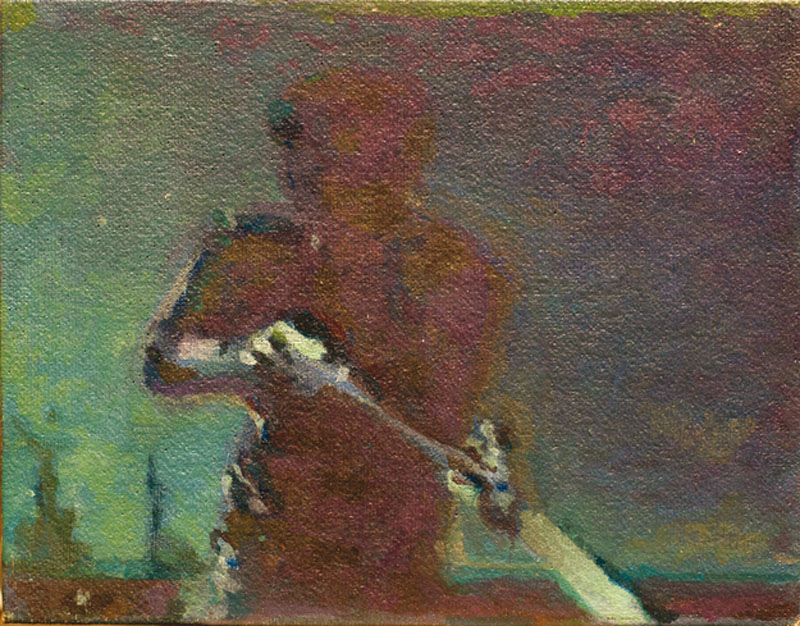

However, this is no ordinary movie. The year 1981 saw General Zia’s military stronghold in Pakistan, along with his shunning of everything that came into conflict with it. That very year, veteran filmmaker, Jamil Dehlavi, released an English-language film based on an unfavourable, fictional martial law regime, called The Blood of Hussain. According to graphic designer and movie buff, Ajmal Hussain, the film also alludes to the seventh century events of Imam Hussain’s martyrdom, who refused allegiance to Yazid. Unfortunately, Ziaul Haq banned the film in Pakistan, and Dehlavi went into exile.

While the film has remained largely out of the picture since then, Inaam Zafar chose to revisit that chapter in history through his small oil on canvas paintings of stills from The Blood of Hussain. At first glance, the works’ size, neatness of display and muted colours might seem contradictory to the fast-paced, dizzying brightness of cinematic films, but that was a deliberate decision by the artist. Even though the work was initially conceived as a single large polyptych, it was reconsidered as smaller pieces in order to draw the viewer’s attention and provide a more intimate experience. The subject choice might also seem unusual but Zafar states that apart from being a cult movie, the “subject of the film still remains contemporary to some extent and resonates with the current situation”. It is interesting to note the artist’s ability to generate emotion and dialogue to matters long forgotten, while also introducing their own concerns and interpretations of the subject.

Some of the painted stills on display include images of an aeroplane in mid-air, lone men waiting for sunset, portraits of military men in their daily routines, soldiers opening fire and various animals such as deer and vultures in waiting. Zafar says he particularly enjoyed pieces that didn’t bear any direct resemblance to the film and remained ambiguous, since they allowed him to personalise the references better.
While the paintings may seem unclear to those who have not seen the film, and perhaps new to even those who have, they are an example of how artists can distill information from various sources and, with creative insight, make it their own. The exhibition may also bring about a renewed interest in the The Blood of Hussain, and reignite a conversation on censorship in Pakistan.
The exhibition will continue at the Sanat Gallery in Karachi until September 11.
Shanzay Subzwari is a fine arts student. She tweets @ShanzaySubzwari
Published in The Express Tribune, Sunday Magazine, September 7th, 2014.

1722586547-0/Untitled-design-(73)1722586547-0-165x106.webp)


1732326457-0/prime-(1)1732326457-0-165x106.webp)












COMMENTS
Comments are moderated and generally will be posted if they are on-topic and not abusive.
For more information, please see our Comments FAQ